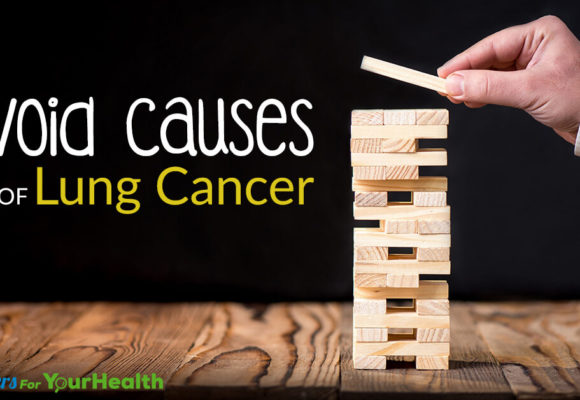1) Grab a FREE copy (Value $14.95) of one of my books Thyroid Symptom Overload
Just pay shipping $7.95 for any US orders. Or, if you want to pay full price plus shipping, order from Amazon :)
2) Take our Thyroid Quiz today and find out what "Thyroid Type" you have
This quiz will help you quickly discover where your symptoms are stemming from.
3) Join Our Thyroid Advocate Membership Site - Natural Thyroid Academy
FREE for a limited time. No credit card required.
4) Work with me and my team privately
Schedule your FREE 15 minute phone consultation and we can find out the best way to help you specifically.
“Smoking” is the first cause that we all think of when it comes to lung cancer. However, smoke is not the only cause of lung cancer. Did you know, among all lung cancer cases registered each year in the US, at least 10% of cases are non-smokers? While secondhand smoke is a major concern, we cannot ignore other factors that cause lung cancer.
Secondhand Smoke or Passive Smoke
Environmental tobacco smoke is called secondhand smoke. When it is exhaled by a smoker, it is called mainstream smoke. When the smoke from a cigarette, cigar, hookah, or any other tobacco burning device is released in the air, it is called sidestream smoke. The particles of sidestream smoke are smaller than mainstream smoke. These are easily inhaled with oxygen and contain higher concentrations of toxic carcinogens. As the particles are smaller, sidestream smoke can cause lung cancer. Passive or involuntary smoking is referred to the exposure of a non-smoker to secondhand smoke.
Secondhand smoke is a major cause of lung cancer among non-smokers. It has more than 7,000 toxic particles, and at least 70 of these particles are cancerous. Alongside lung cancer, secondhand smoke can also cause cancer in larynx, pharynx, stomach, rectum, breast, and bladder in adults, and leukemia, brain tumors, lymphoma, or liver cancer in children. Secondhand smoke also targets the immune system of non-smoker and makes them more vulnerable to various diseases.
Thirdhand Smoke
The residual tobacco smoke is called thirdhand smoke. A part of secondhand tobacco smoke may remain in the environment however, there is not any research evidence relating to the occurrence of lung cancer due to thirdhand smoke. However, the small particles of thirdhand smoke can clog arteries, damage DNA in humans, and cause blood clotting in the animals.
The exposure to secondhand and thirdhand smoke is quite high in the US. You might be exposed to secondhand or thirdhand smoke at public places, offices, bus station, friend’s home, car, or even at your own home. The laws for smoking vary from state to state, but you need to keep yourself protected from secondhand and thirdhand smoke to minimize the chances of lung cancer occurrence.
What You Can Do?
It is not always polite to ask the smoker to leave the place, or smoke somewhere else. The best way is to cover your nose and mouth with medical masks. Make sure that your home and car are smoke-free. Proper dehumidification and ventilation can help keep your home clean from smoke particles. Keep environment purifying indoors, such as English ivy, bamboo palm, Boston fern, lady palm, and Chinese evergreen.
Other Causes of Lung Cancer
Although tobacco smoking is by far the most commonly known cause of lung cancer, there still are various other factors that cause lung cancer, directly or indirectly.
Exposure to Radon Gas
The naturally occurring radioactive gas, Radon gas emits ionizing radiations. At least 21,000 lung cancer related deaths in the US have been associated with radon gas. The chances of exposure to radon gas are high in the urban areas. Mostly found in the soil, radon gas travels into the pipelines, drains, foundations, and other openings of homes to pollute the indoor environment.
According to the US Environmental Protection Agency, at least one out of 15 homes in the US has dangerous concentrations of radon gas in the environment. The gas is odorless and invisible, but simple atmosphere quality tests can help detect its concentration in the air.
Exposure to Dangerous Chemicals
The silicate fibers, asbestos fibers can cause lung cancer after long-term exposure. The use of asbestos fibers is prohibited in the US, but it is still used in thermal and acoustic insulation. The probability of lung cancer is higher at sites where smoker are exposed to Asbestos fibers.
Silica, used in bricklaying and glass making, also gets absorbed with oxygen in the lungs and increases the risk of lung cancer. According to a research study, the concentration of oxygenated volatile organic compounds, specifically 1-butanol, 2-butanone, and aldehydes was high in lung cancer patients. The common sources of VOCs include tobacco products, burning fuels, paint, copying and printing machines, varnishes, and lacquers.
The fumes of burning fuels and diesel engines also release carbon and nitrogen compounds, which absorb with oxygen in the lungs and increase the risk of lung cancer. Professional drivers, mechanics, and people who are exposed to burning fuels regularly are at high risk of lung cancer.
Air Pollution
Good news, ozone layer is repairing itself. Bad news, the cost of environmental pollution is 1.7 million deaths of children under 5 years of age every year, and the number is increasing. Air pollution is a complicated mixture of various carcinogenic chemicals and toxins. The sources of these toxins and chemicals include burning fuels, VOC sources, smoking, CFC emitting equipment such as air conditioners and refrigerators, etc.
After 2050, air pollution will become one of the biggest causes of lung cancer worldwide. To cope with air pollution, the governments are taking action and the Geneva Summit is one of the examples. However, medical researchers tell that the chances of lung cancer due to air pollution can be reduced by improving the overall quality of life, such as incorporating a fitness regime, and improving breathing techniques, etc.
Low Immunity
Low immunity in general does not cause lung cancer. However, extremely low immunity, such as that caused by HIV, AIDS, or medicines taken after organ transplant, puts the person at the risk of lung cancer. Some autoimmune conditions, such as rheumatoid arthritis, may also cause lung cancer.
Radiotherapy Treatment
If a person has been treated with radiotherapy for womb cancer, testicular cancer, non-Hodgkin lymphoma, or Hodgkin lymphoma, the chances of lung cancer my slightly increase.
Previous Lung Cancer or Respiratory Disorder
The survivors of lung cancer are at higher risk of disease recurrence, especially if they are smokers. Other than that, the patients of tuberculosis or chronic obstructive pulmonary disease are also at high risk of lung cancer.
Family History
The chances of lung cancer are high if a close relative, such as sibling or maternal uncle has been diagnosed with lung cancer.
Exposure to Heavy Metals
Chromium, arsenic, cadmium, and various other heavy metals increase toxicity in the body, leading to lung cancer. These heavy metals are not only found in the cosmetic products, but these are also found in unpurified water. Pesticides, air fresheners, emulsifiers, and other such elements of household also increase the exposure to heavy metals.
Nicotine and Caffeine
According to a research study, the consumption of black tea (nicotine) does not affect the probability of lung cancer in the smokers and non-smokers. It is because the effect of nicotine is balanced with catechins and flavonoids in the tea. Nicotine is a compound found in tobacco. Caffeine, on the other hand, can increase the risk of lung cancer. People who consumed decaffeinated coffee showed symptoms of reduced risk of lung cancer.
Sometimes, the cause of lung cancer could be unclear, considering the drastically changing environmental conditions. Lung cancer can be prevented by improving lifestyle, eating a combination of fruits, vegetables and meats, incorporating an exercise routine, and practicing breathing exercises.
Lung cancer is usually diagnosed with its symptoms. However, it starts developing years before unveiling its symptoms. An appropriate thorough medical checkup is necessary for early stage diagnosis of lung cancer.
References
https://www.mnn.com/health/healthy-spaces/stories/cleaning-cigarette-smells-with-plants
http://www.medicinenet.com/lung_cancer/article.htm
http://www.who.int/mediacentre/news/releases/2017/pollution-child-death/en/
https://www.ncbi.nlm.nih.gov/pubmed/27732569
http://edition.cnn.com/2016/07/01/health/antarctic-ozone-layer-healing/index.html
https://www.ncbi.nlm.nih.gov/pubmed/16090999






